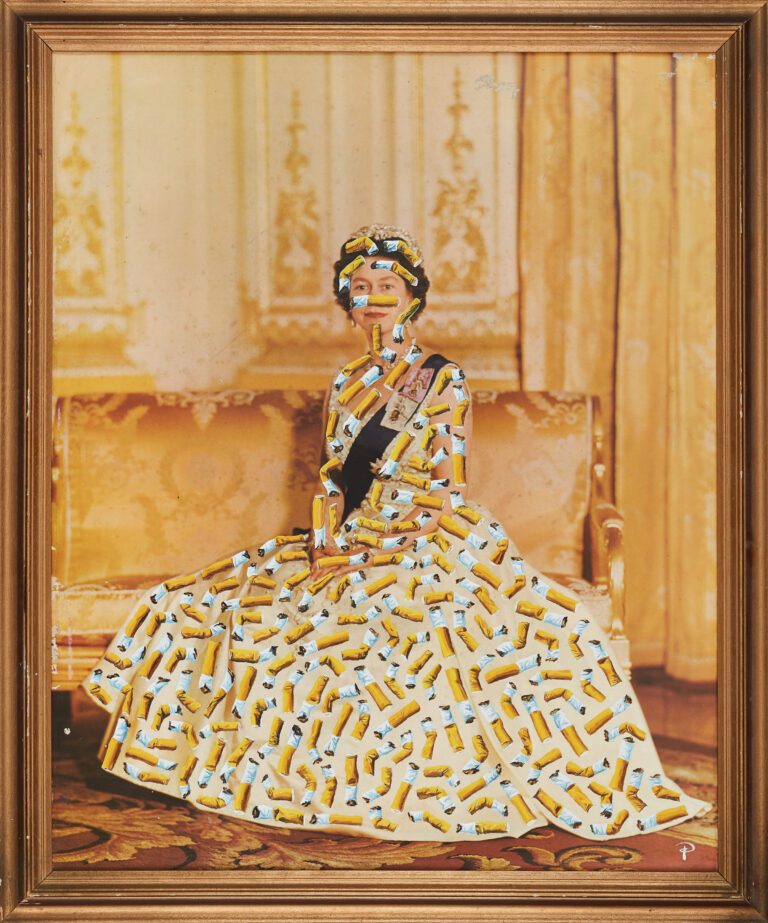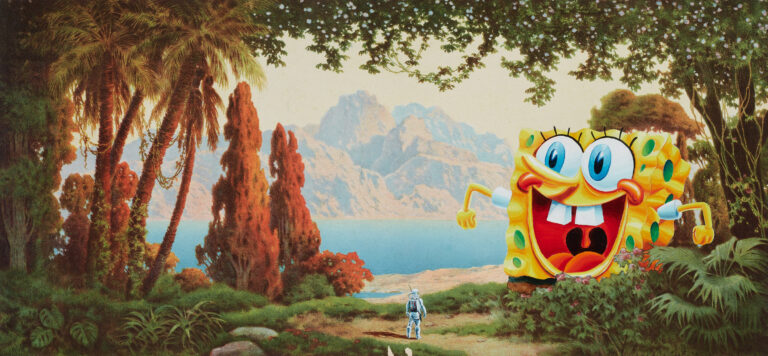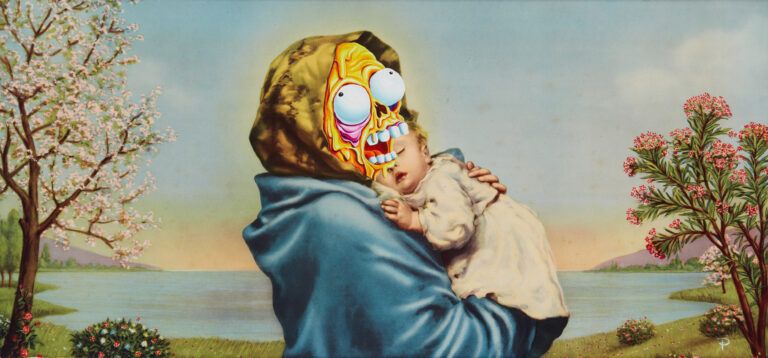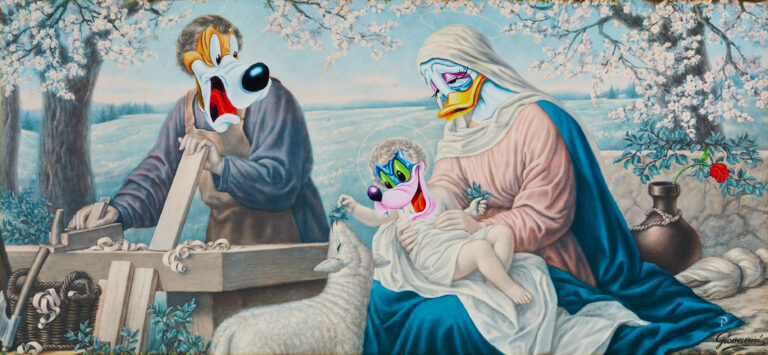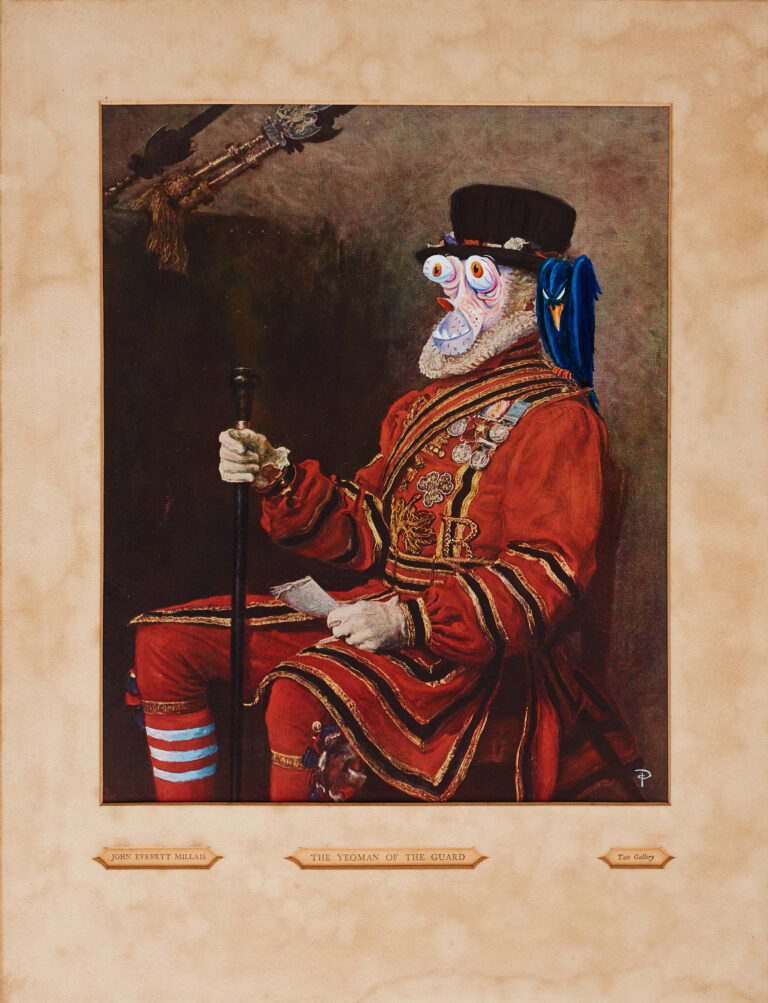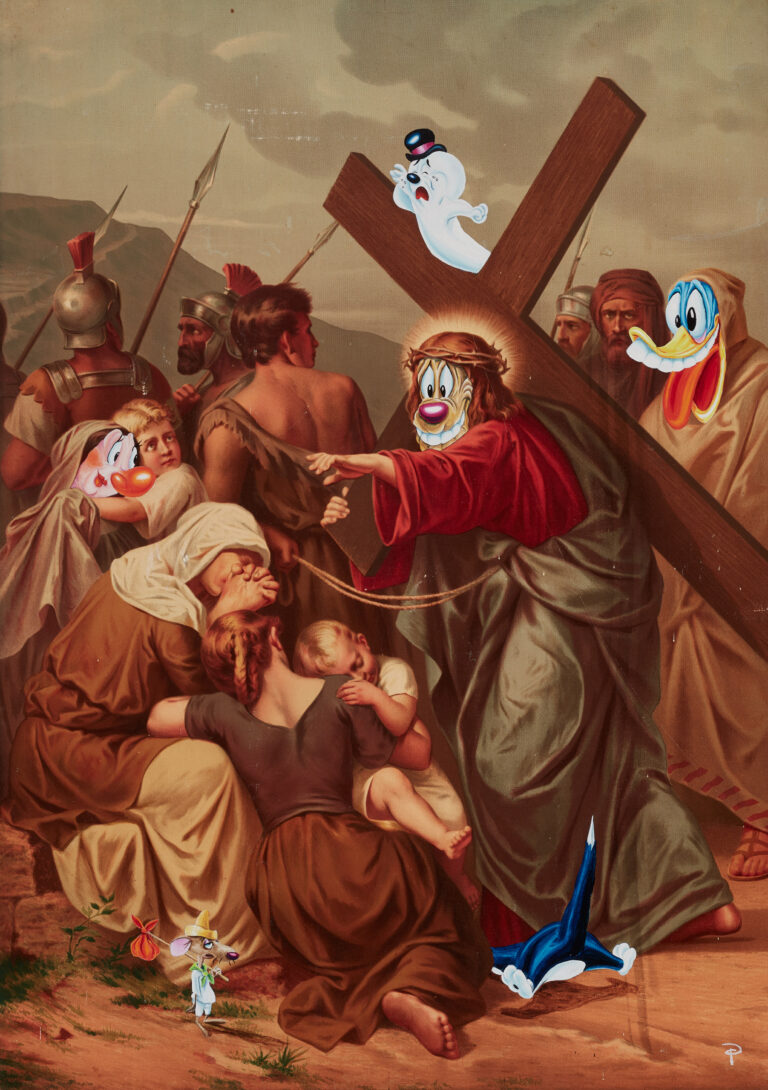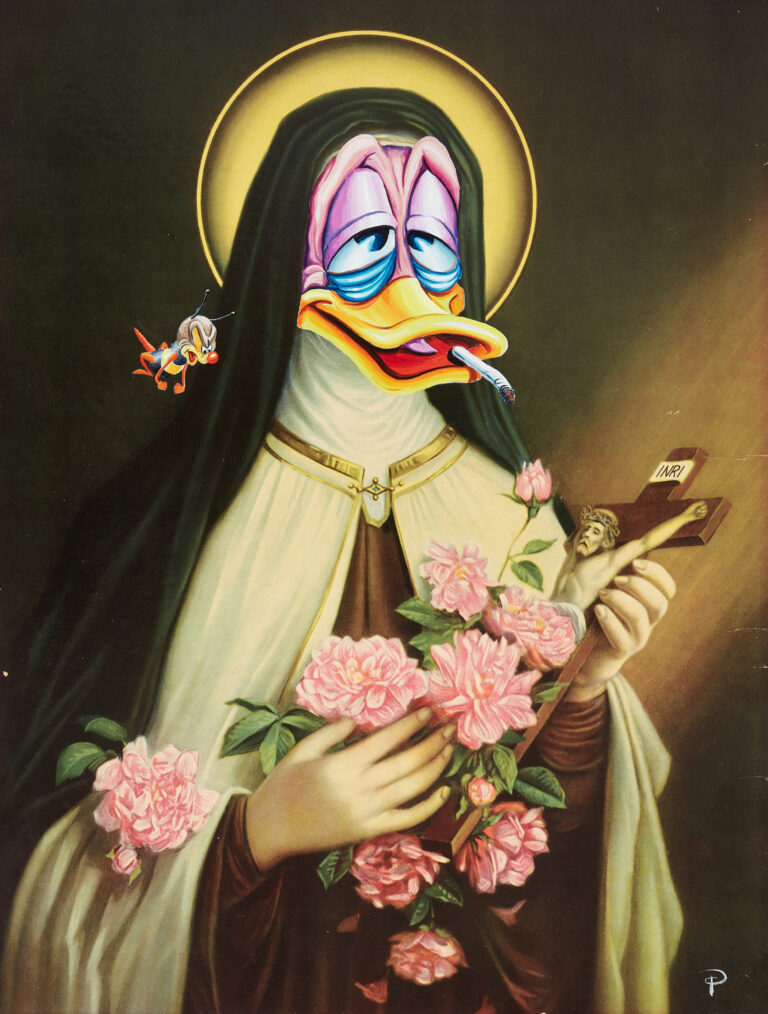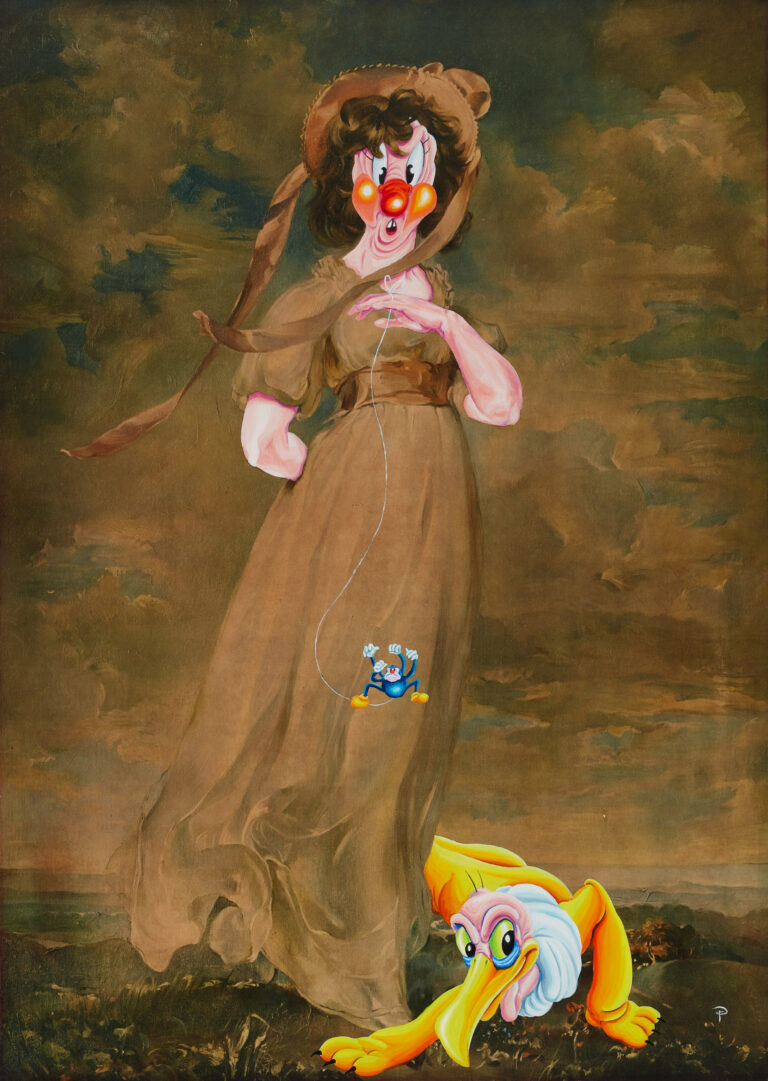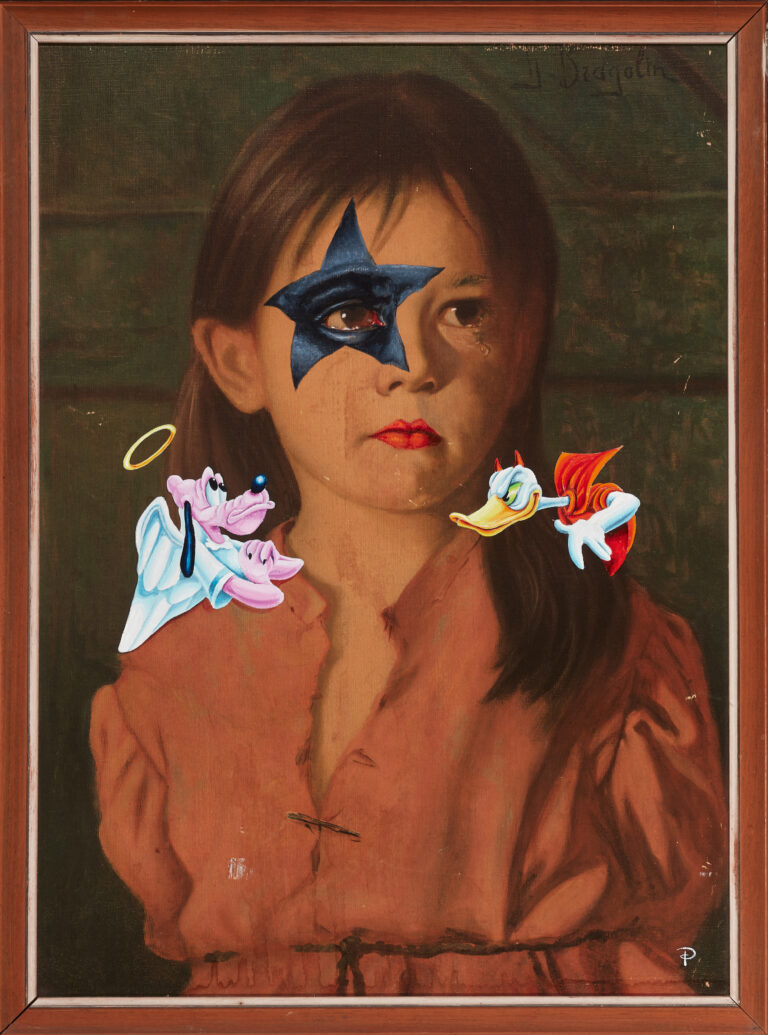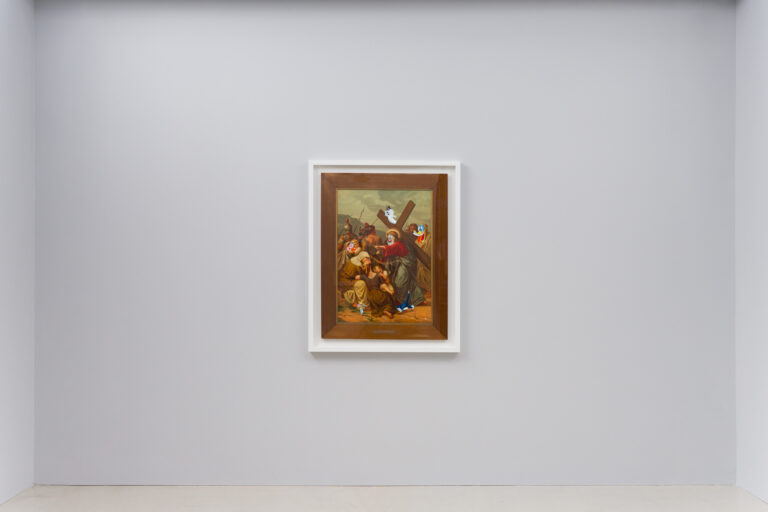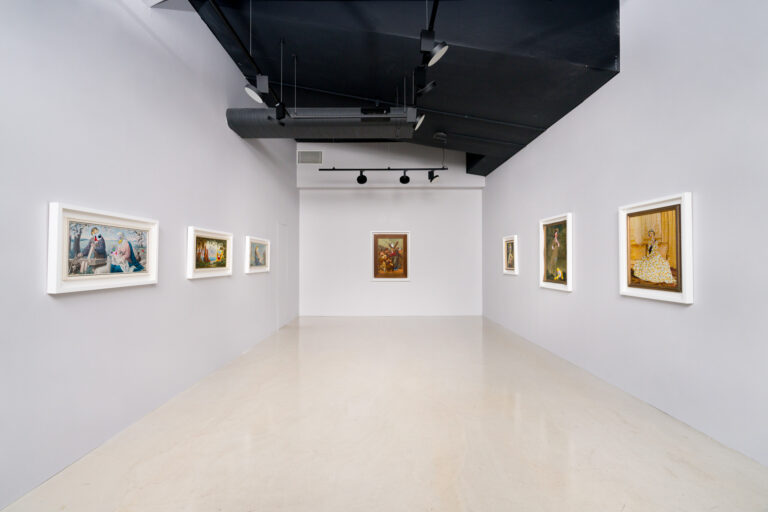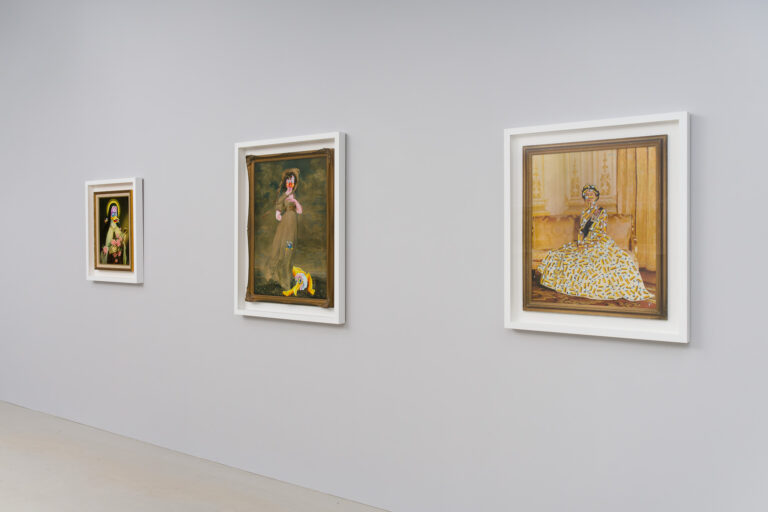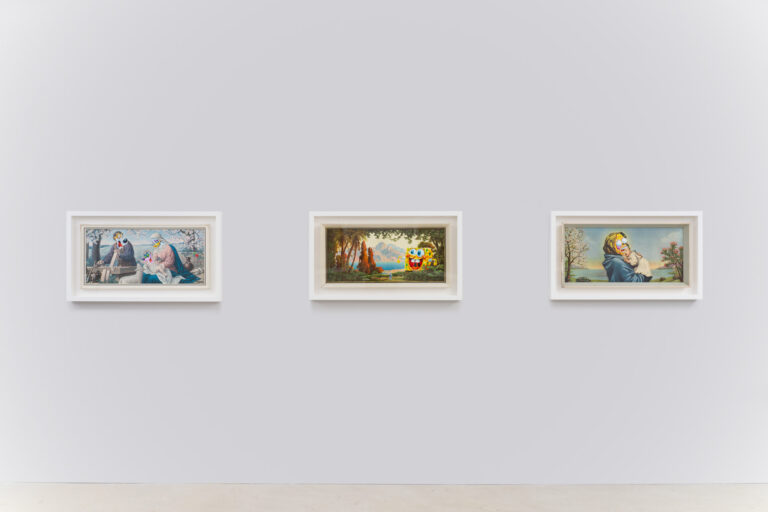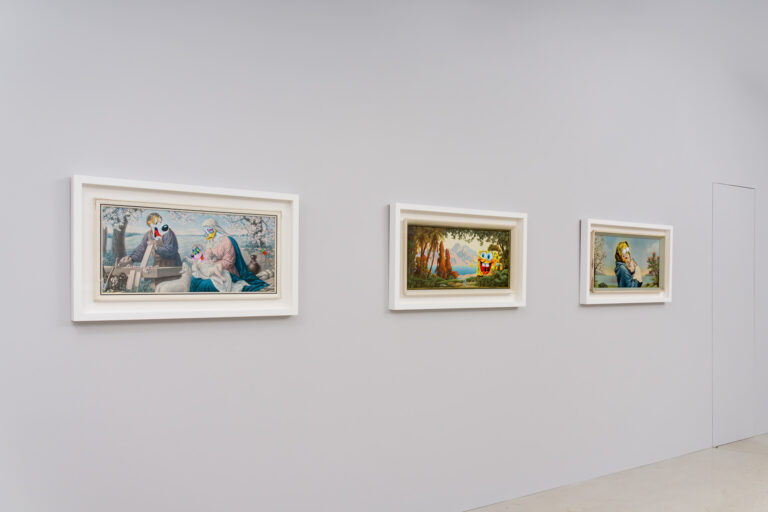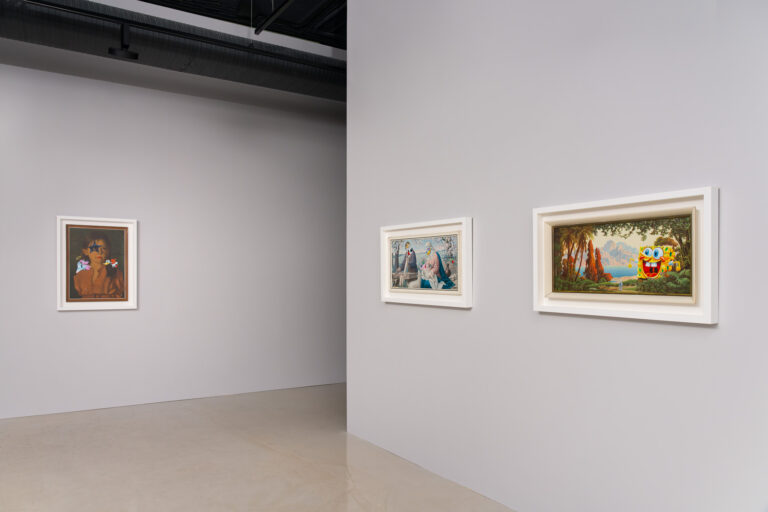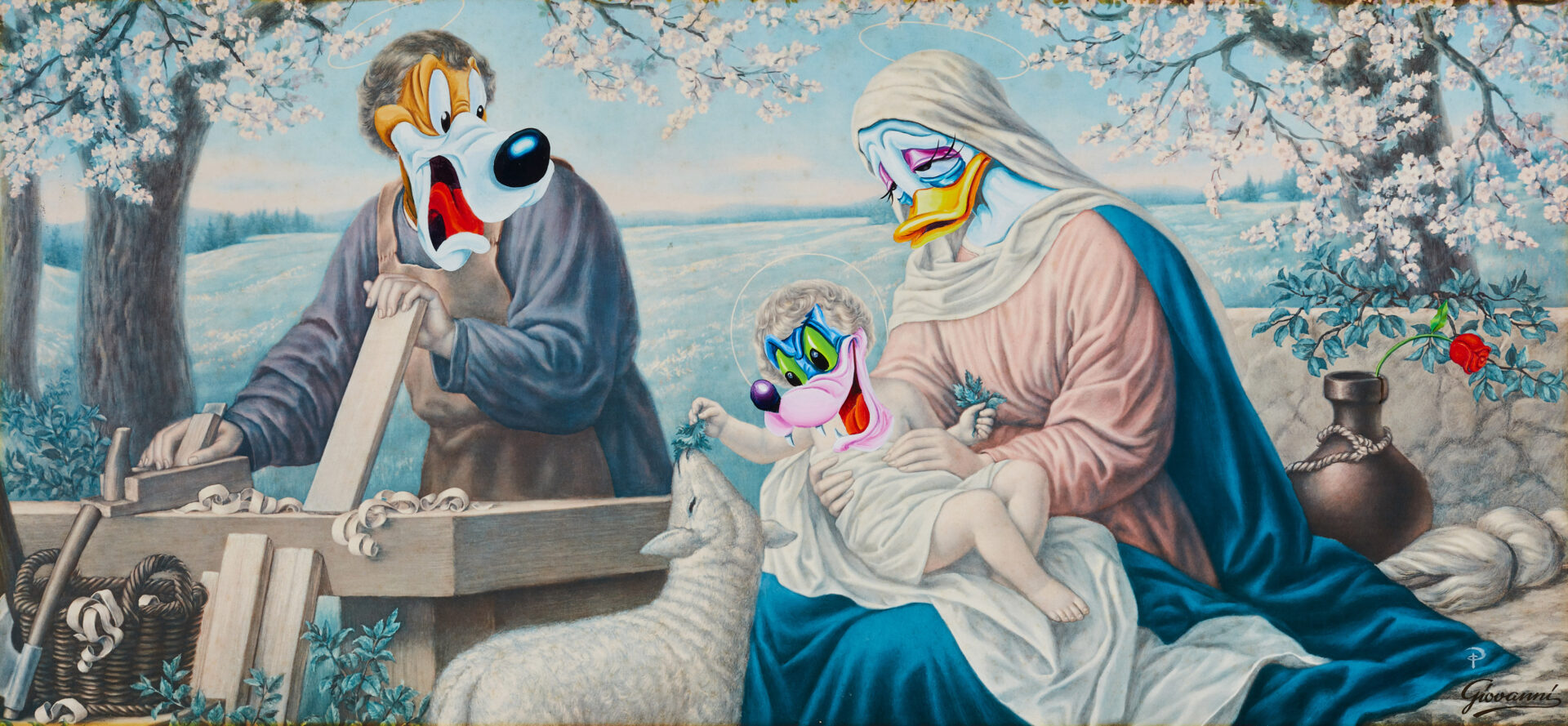
Artworks
Installations
Philjames’ new exhibition Yes please…, is fun and philosophical in equal measure. Philjames continues a method that he has mastered. With the skill of a conservator, he carefully inserts new elements on old found paintings and prints, totally hijacking the original image in the process. The amendments are often but not always from the cartoon Golden Age of Looney Tunes and stretch and squeeze animation style.
The works power does not begin and end in that invention however. This show underscores that this layered, and collaged approach to painting produces many different strategic effects. Borrowing from toons and caricature, there is a tendency to read the images as ones of ridicule and satire and this is indeed an important tactic for Philjames. The Church and State, Jesus and QEII, and their servants all come in for a serve in this show.
Another tactic though is that you still understand the power of the picture now made strange and obscene. The works function because they are two faced: one public and decorous and moral and the other immoral, irrational and sometimes ugly. What Philjames shows is that beneath the rational functioning of our society is often an anxious, hidden and nightly side.
By using the offset lithograph which first came off the presses in 1875, Philjames takes aim at the birth of modernity, and by extension sees the present day society as its legacy. The images produced in the nineteenth century were sold in their thousands and cheaply sold to the at that time new middle-class. Allegories and religious pictures produced the Victorian values of faith, loyalty, piety and charity, for suburban mantelpieces. Beneath Philjames’s interventions you can clearly still imagine the sentimentality but also the directness and seductive power of these images.
The sophistication of Philjames’s binary images is that they question the power of allegory itself. How do we symbolise important abstract ideas? How do we represent deeper and spiritual meaning for a world that craves it, without falling back into sentimentality? By reclaiming and reforming the old images, he, perhaps against his better judgment, protects and conserves the lithographs. It reminds us in our own profane times that belief in the young Jesus in a carpenter’s shop once gave people hope; that a Yeoman’s life service meant something enough to be celebrated in a print; and that a street urchin crying would call out from the wall for justice and charity. Can the original still offer something?
I mean the double sidedness is just a truth of the human condition. On one hand an upstanding military man might have a good posture and the esteem of all his fellow soldiers. He holds a sceptre as a sign of his rank, medals and a special hat. But we all know these types with their twisted narcissism, or alternatively their guilt laden obsequiousness, which flops out as anxious rage occasionally as the pressure mounts. Even the raven, the good omen of the Yeoman guard seems shifty and villainous (more like a vampiric bat, or infernal angel).
Philjames images represent the Kafkaesque, the surreal, and obscene reality of our lives. They are works that begin with some of the most beautiful sentiments of our society. Very quickly though, we realise that our communities and institutions are also underpinned by irrational and strange desires.
Dr Oliver Watts, 2023

